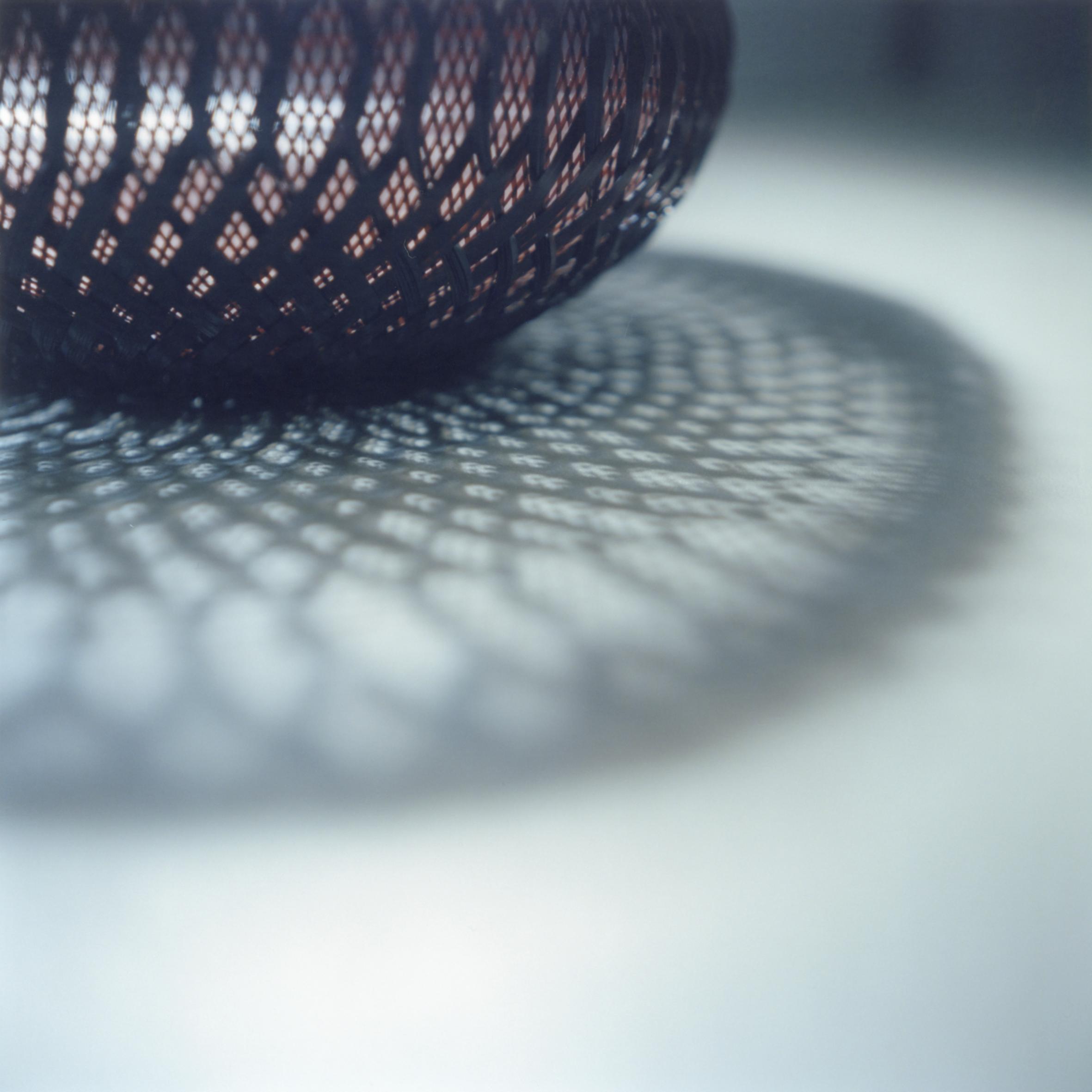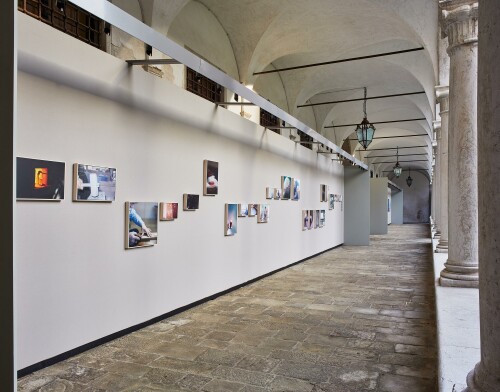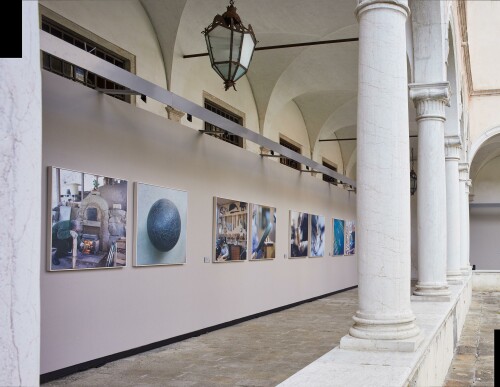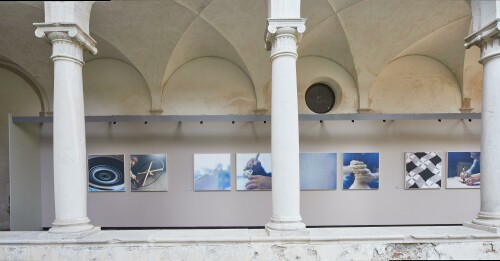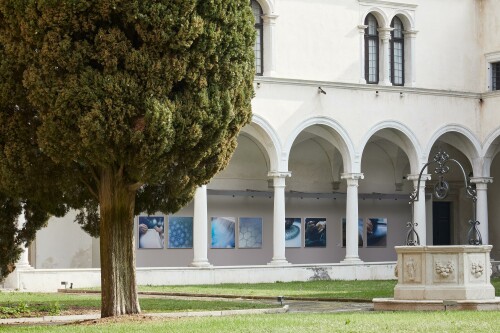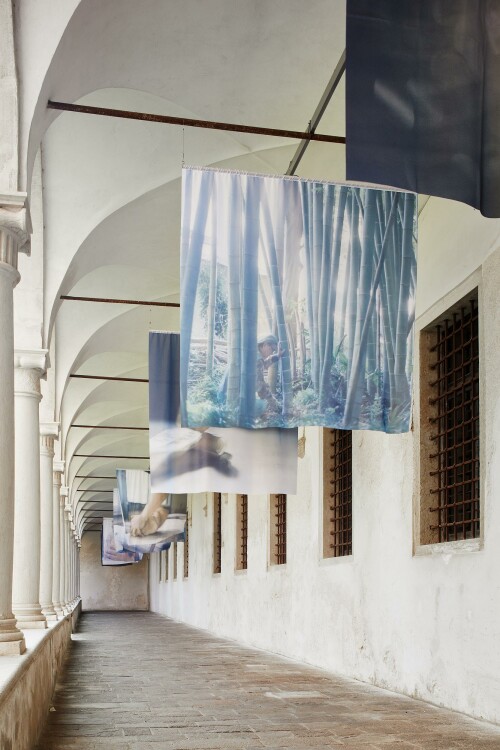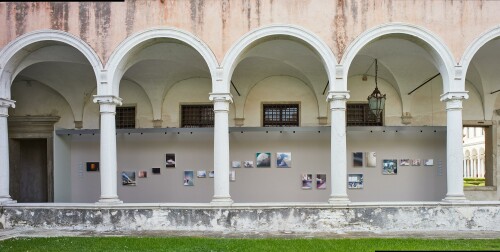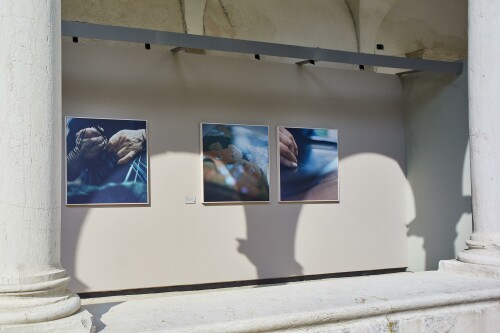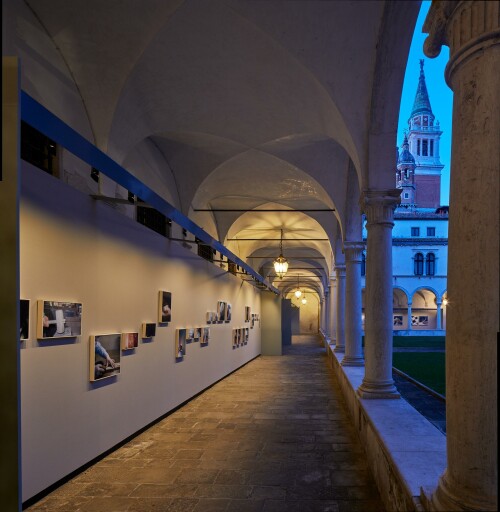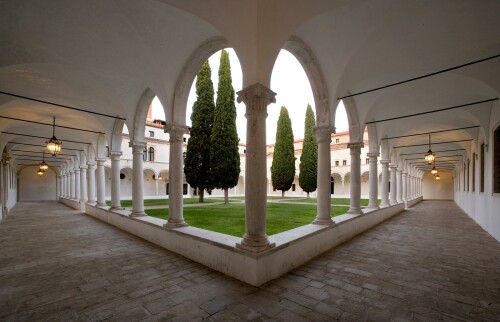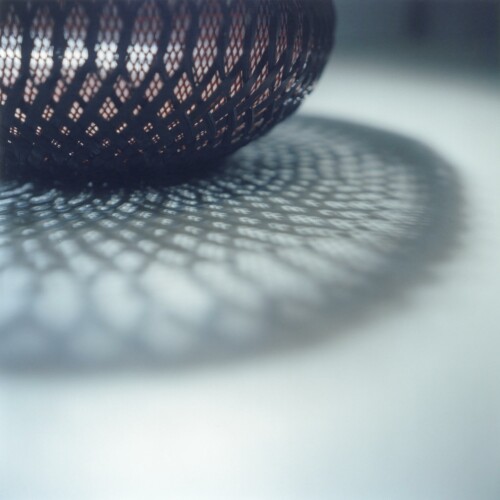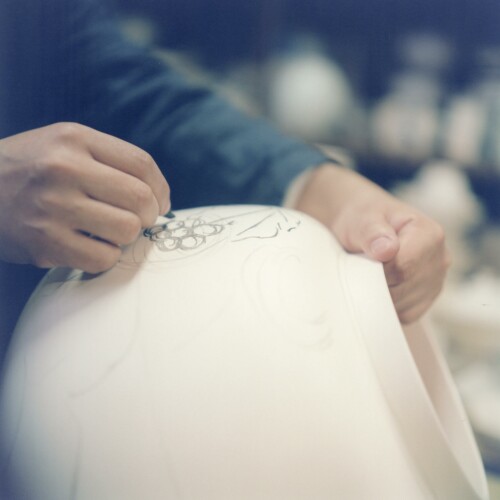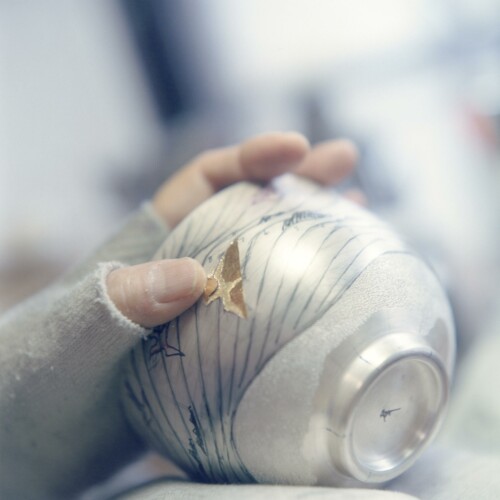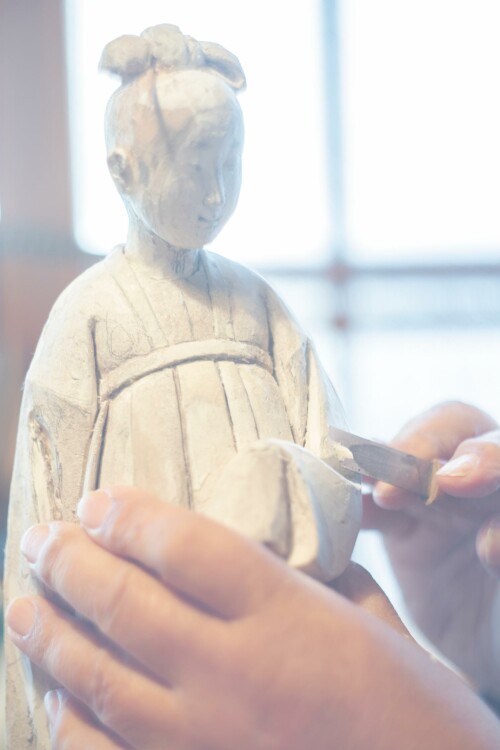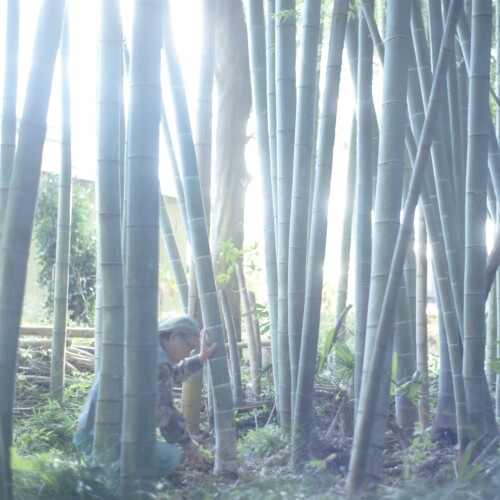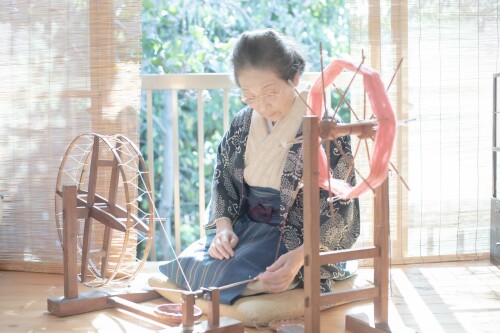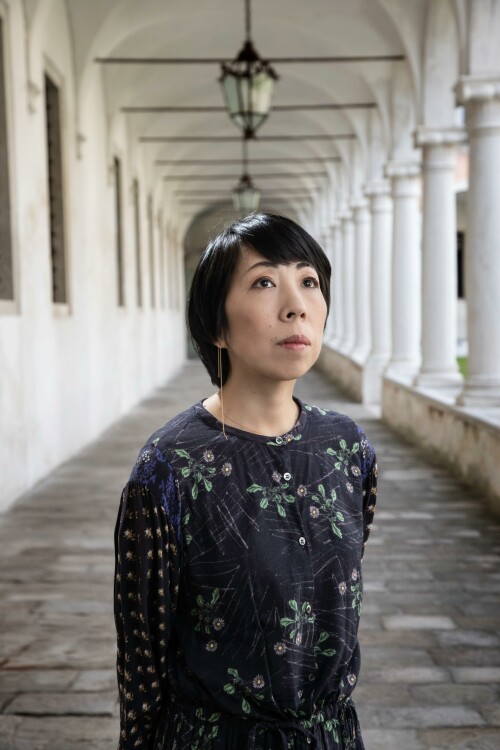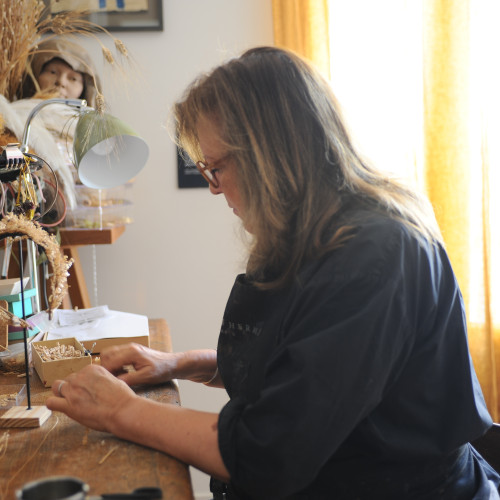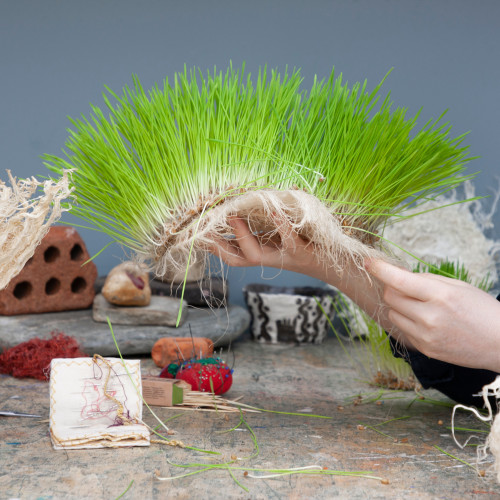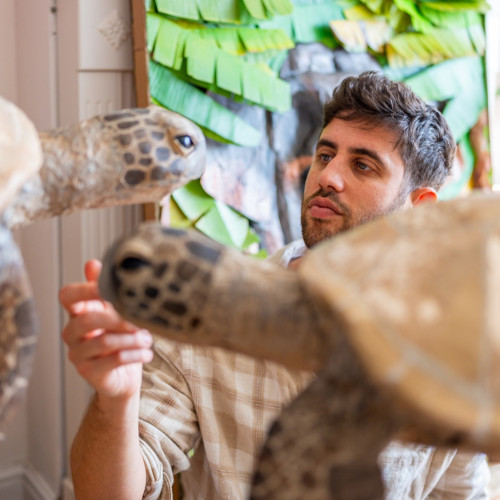In The Ateliers of Wonders visitors are invited to discover 12 revered National Living Treasures at the moment of creation – as they uphold time-honoured Japanese traditions
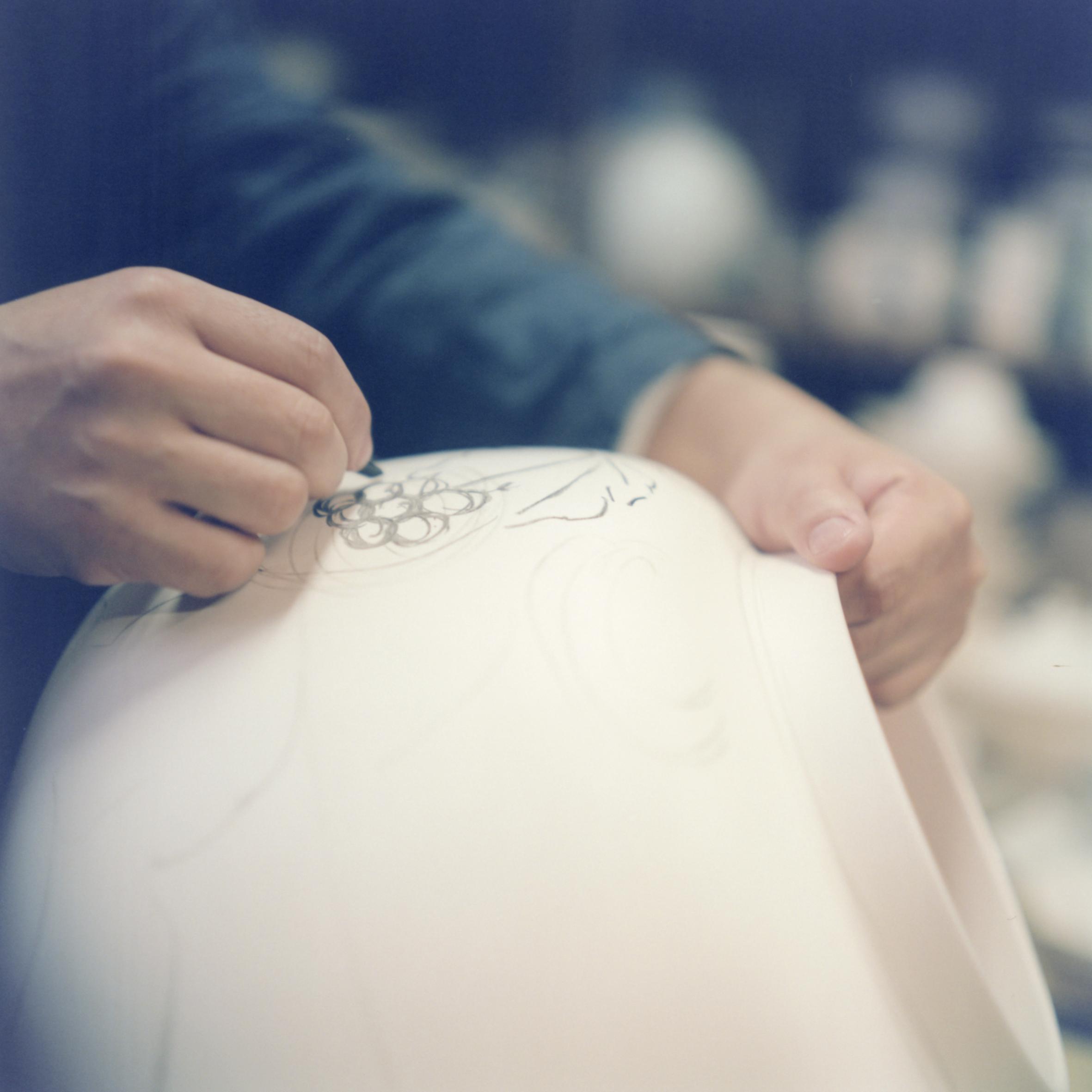
Japanese National Living Treasure Imaemon Imaizumi XIV at work Rinko Kawauchi
©Michelangelo Foundation
• Japanese photographer Rinko Kawauchi captures the gestures and materials of 12 exceptional artisans designated by Japan as “Preservers of Important Intangible Cultural Properties” in pictures taken in their ateliers
• An exhibition that wraps around the Renaissance-style Cypress Cloister offers visitors a contemplative and exclusive experience, transporting them to the intimate workshops of Japanese masters
• Deep expressions of a rich cultural heritage are seen in the gestures of the hand: red lacquer precisely applied, the deft turn of bamboo, and flakes of gold dropped gently onto a surface that conveys a world of light
The Ateliers of Wonders, an exhibition of images by the award-winning photographer Rinko Kawauchi, gives visitors an unprecedented glimpse inside the workshops of Japan’s National Living Treasures. Their high levels of mastery of such skills as ceramic crafting, lacquering and textile dyeing have won them designation by the Japanese government as keepers of “Important Intangible Cultural Properties”. With this great honour comes the responsibility of upholding the ancient traditions at the highest levels of expression and bridging them safely into the future.
The artful and intelligent lens of Rinko Kawauchi captures the materials, skills, gestures and savoir-faire of 12 of these exceptional artisans. The photographs reveal the artisans at the moment of creation, as they perform with great skill such ancient traditions as urushi lacquering, yuzen textile dyeing, tsumugi-ori weaving and ceramic overglazing. Deep expressions of a rich cultural heritage are seen in the gesture of the hand: red lacquer precisely applied, the deft turn of bamboo, and flakes of gold dropped gently onto a surface that conveys a world of light
These beautiful photographs are exhibited in the Renaissance-style Cypress Cloister, offering visitors a contemplative experience as they observe intimate images of the masters in their workshops in Japan. The selection of the National Living Treasures has been supervised by Naoto Fukasawa, a Japanese designer, professor and curator, along with museum director Tokugo Uchida. They also co-curate the work of these talented master artisans in an adjacent exhibition, 12 Stone Garden (in the Palladian Refectory).
“Taking photographs in Living National Treasures’ studios left me with a deep impression of the power that can be released by human hands. As I watched these people working, I felt the wondrousness and potential of human ability.” – Rinko Kawauchi
Detail of an artwork crafted by Japanese National Living Treasure Noburu Fujinuma Rinko Kawauchi ©Michelangelo Foundation
The 12 National Living Treasures whose objects are on display:
Imaemon Imaizumi XIV, master of the traditional technique of overglazing in making ceramics, and the 14th successor in the family that served Lord Nabeshima as officially appointed potter. XIV, master of the traditional technique of overglazing in making ceramics, and the 14th successor in the family that served Lord Nabeshima as officially appointed potter.
Zenzo Fukushima makes Koishiwara-ware, celadon based on traditional ceramic-making techniques and materials from the 17th century.
Kunihiko Moriguchi, a textile dyer adept at geometric designs using natural motifs such as flowers, snow and streams, in Kyoto’s yuzen textile-dyeing tradition.
Sonoko Sasaki dyes tsumugi-type silk yarn in colours derived from grasses and leaves using the tsumugi-ori weaving technique. She has been awarded Japan’s Order of the Rising Sun, Gold Rays with Rosette.
Kazumi Murose makes urushi lacquerware using the technique of maki-e, which dates to the 8th century, to create highly refined modern designs.
Isao Onishi undertakes the whole process of cabinetmaking himself, from moulding cypress wood to finishing the lacquer. His work has a powerful and assertive presence. His designation as a National Living Treasure is for the lacquering technique known as kyushitsu.
Yukie Osumi, a master of metal forging, uses silver sheet metal and mallets to create her work, which is characterised by modern design and gold/lead inlay. Her designation as a National Living Treasure is for tankin (metalwork)
Noboru Fujinuma weaves or braids fine sticks of bamboo into fine baskets and other objects. His designation is for bamboo craftwork, which was passed down from the 8th century Chinese Tang culture.
Komao Hayashi employs a style of making toso (paulownia paste) dolls that dates to the 17th century. His work is informed by knowledge of the Noh theatre and other long-established performing arts such as kyogen, kabuki and Kyoto-style dance. He was awarded Japan’s Order of the Rising Sun, Gold Rays with Rosette.
Jun Isezaki is one of the most renowned master artisans of Bizen ceramics, a traditional craft that emerged over a thousand years ago in the Bizen district
Takeshi Kitamura is a textile artist who employs ancient weaving techniques, recreating traditional methods in Nishijin, the historical home of textiles in the Kyoto region of Japan.
Kenji Suda is a woodwork artist and cabinetmaker who uses a traditional technique called sashimono to create intricate intarsia wooden boxes, using Japanese lacquer or urushi.
Who are the National Living Treasures?
Craftsmanship has been deeply rooted in the Japanese culture since the beginning of its artistic history. To safeguard this cultural heritage the Japanese government has been appointing National Living Treasures since 1950. National Living Treasures are exceptional master artisans who, with their time-honoured techniques, ensure the preservation of traditional Japanese intangible heritage. The cultural system aims to preserve time-honoured knowledge and ensure it is passed on to future generations. Those who have been designated National Living Treasures are expected to comply with a strict set of requirements.
The Ateliers of Wonders is set in the Cypress Cloister at Fondazione Giorgio Cini. It is one of 15 exhibitions that comprise Homo Faber Event 2022, organised by the Michelangelo Foundation.
Note per i redattori
homofaber.com
Discover Venice the #HomoFaberWay
@homofaber
Homo Faber Event
Crafting a more human future
Fondazione Giorgio Cini, San Giorgio Maggiore, Venezia
Organizzato dalla Michelangelo Foundation for Creativity and Craftsmanship, Homo Faber Event è una mostra internazionale che promuove il talento artigianale, mettendo in mostra un'impressionante varietà di materiali, tecniche e abilità attraverso dimostrazioni dal vivo, esperienze digitali coinvolgenti e fantasiose esposizioni di creazioni artigianali. Da oggetti funzionali di uso quotidiano a pezzi decorativi eccezionali, questa edizione evidenzia il ruolo dei mestieri d’arte nella creazione di un futuro più sostenibile e inclusivo. L'evento offre una rara possibilità di ammirare il prestigioso lavoro di una selezione di Tesori Nazionali Viventi del Giappone e di sperimentare l'artigianato e le sue connessioni con le arti e il mondo del design. I visitatori possono partecipare a visite guidate dei 15 spazi espositivi condotte da studenti appassionati che partecipano al programma degli Young Ambassadors. Immaginato da un team di curatori e designer di fama mondiale, l'evento scenografico trasforma i magnifici spazi della Fondazione Giorgio Cini, situata sull'Isola di San Giorgio Maggiore nel cuore della laguna veneziana. Oltre all'evento, il progetto Homo Faber in Città offre ai visitatori la possibilità di scoprire l'alto artigianato in tutta Venezia attraverso itinerari su misura. homofaber.com
La Michelangelo Foundation for Creativity and Craftsmanship è un'istituzione no-profit con sede a Ginevra, Svizzera, che sostiene gli artigiani contemporanei di tutto il mondo con l'obiettivo di promuovere un futuro più umano, inclusivo e sostenibile. La Fondazione cerca di dare risalto alle connessioni tra i mestieri d’arte, le arti in generale e il mondo del design. La sua missione è quella di celebrare e preservare l'artigianato d’eccellenza e la sua varietà di creatori, materiali e tecniche, aumentando il riconoscimento dell'artigianato e la sua fattibilità come percorso professionale per le nuove generazioni. Dai coinvolgenti programmi educativi come le Summer Schools, al suo progetto digitale Homo Faber Guide e alla mostra internazionale Homo Faber Event, la Fondazione sta promuovendo un movimento culturale incentrato su maestri artigiani e stelle nascenti. michelangelofoundation.org
Rinko Kawauchi
Rinko è nata nella Prefettura di Shiga nel 1972. Nel 2002 ha ricevuto il premio Kimura Ihei per le sue opere Utatani e Hanabi. Tra i tanti riconoscimenti ricevuti anche il 25mo premio Infinity nella categoria delle Arti nel 2009. A Rinko Kawauchi sono state dedicate diverse personali, tra cui The River Embraced Me (2016) presso il Museo di Arte Contemporanea di Kukamoto. È autrice di numerose pubblicazioni, tra le quali Halo (2017), il libro illustrato Hajimari no Hi (Il giorno in cui ho iniziato, 2018) e When I was Seven (2019).
Naoto Fukasawa
Designer giapponese, professore e curatore che ha esportato la sua esclusiva filosofia del design ai principali marchi mondiali. Naoto Fukasawa ha disegnato prodotti per numerosi importanti marchi di livello internazionale, passando attraverso diverse discipline del design, dai dispostivi elettronici di precisione all’arredamento, all’architettura, agli arredi d’interno. Con il suo lavoro mette in connessione la dedizione alla bellezza della forma con il potere del silenzio, una filosofia del design che gli ha fatto ottenere riconoscimenti internazionali per la sua capacità nell’esprimere la vera essenza di un oggetto. Parallelamente, è anche curatore del Museo di Artigianato tradizionale popolare giapponese, professore presso l’Università Tama di Belle Arti ed è stato membro di numerose giurie, tra cui il Loewe Craft Prize. Nel 2007, la Royal Society of Arts del Regno Unito gli ha conferito il titolo di “onorevole designer reale per l’industria”. Ha vinto numerosi premi, tra i quali l’Isamu Noguchi Award nel 2018.
Tokugo Uchida
Direttore del Museo MOA di Arte e del Museo Hakone di Arte, Tokugo Uchida è uno dei maggiori opinionisti culturali del Giappone. Ha completato il suo dottorato di ricerca in estetica presso l’Università di Keio nel 2007 e da allora ha insegnato diffusamente in Giappone e all’estero. La sua competenza culturale lo ha portato ad occupare il Consiglio Nazionale degli Affari Culturali che delibera la nomina dei Tesori Nazionali Viventi del Giappone. Inoltre, ha anche diretto una commissione governativa sull’artigianato tradizionale ed è un esperto di laccatura, essendo vice-presidente dell’Accademia per la Ricerca sulla Lacca, nonché autore di numerosi libri in materia.


